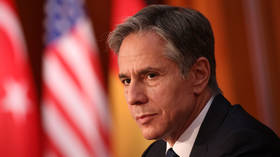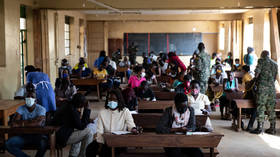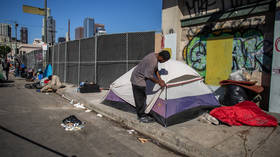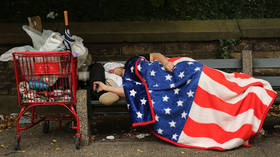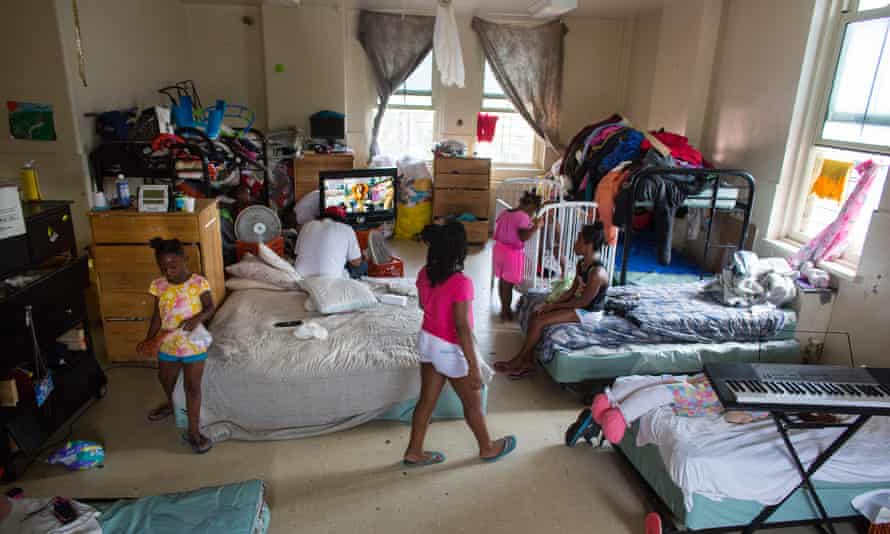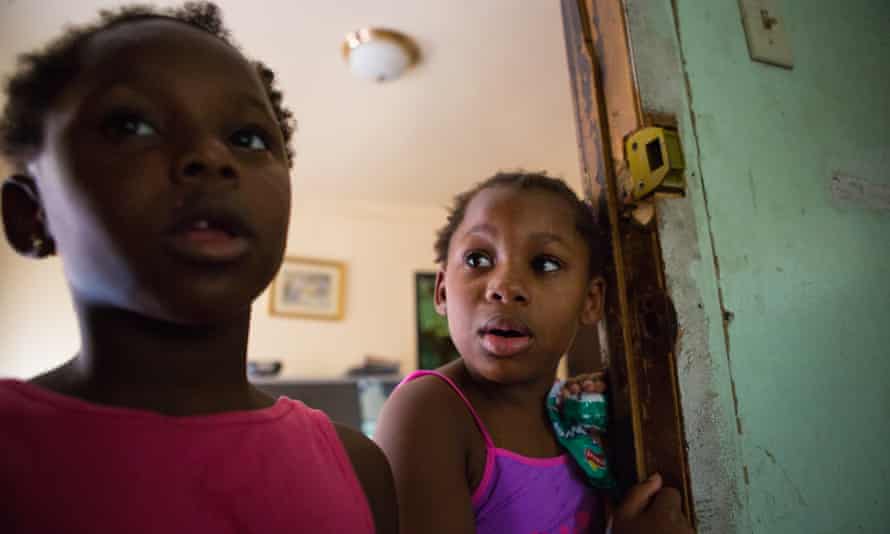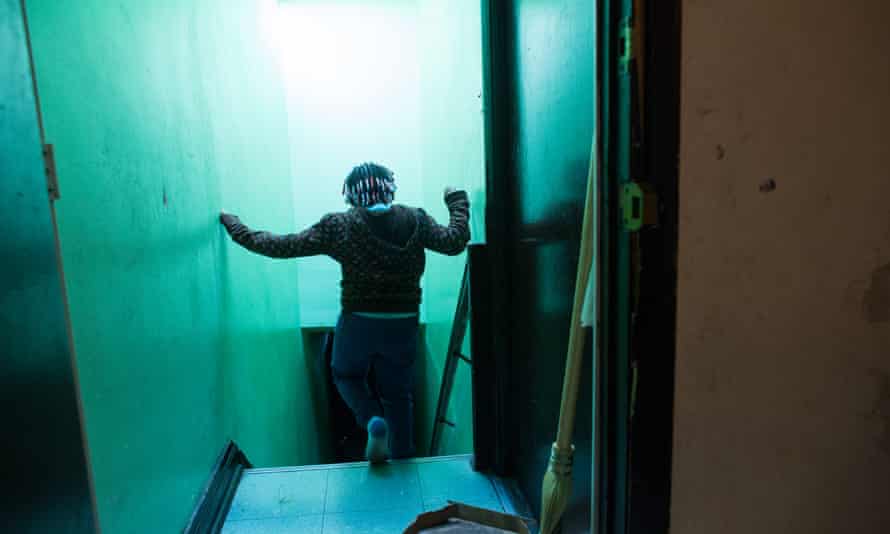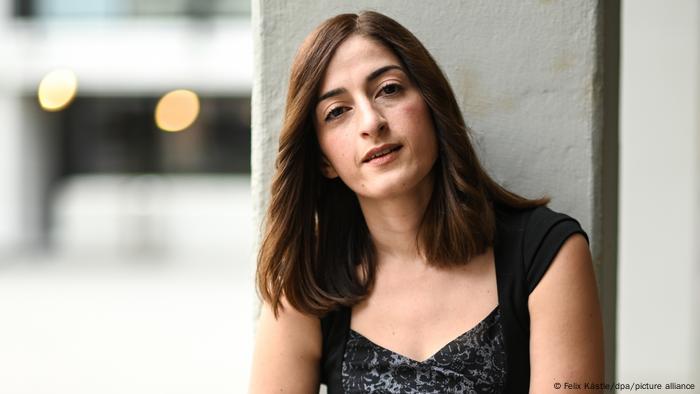This article was originally published by Scheerpost.
Here’s how the world should operate in simple terms: A certain country or region or city or township or Hobbit hole tries something in order to help their society or group or hovel – if it works, other places then do it. If it doesn’t work, other places don’t do it. It’s like when you were a kid and you saw your brother slide down the banister and rack himself on the newel post – You then thought, “Maybe that activity is not for me.” But if he didn’t nail himself in the jewels, you probably thought, “I think I’ll try that.”
That’s how the United States government should work, but it doesn’t. For-profit healthcare, corporate personhood, the drug war, funding terrorists overseas that we call “moderate rebels,” etc. – all of these things have been tried, they fu***n’ suck every time, and we keep doing them. The U.S. continually racks itself on the newel post all day long and then responds, “I think I’ll try that again.”
But the reverse should be true also – if a city or country anywhere in the world tries something and it works great, we should do it.
This brings me to Universal Basic Income: everybody receiving money from a government simply for being a citizen, no questions asked. It’s high time we try it in the US and see whether it works. Oh wait, I just remembered – it’s been tried countless times and worked every damn time. How do I know that? …Reading.
As Rutger Bregman details in his book “Utopia For Realists,” UBI has been tried many times — in Canada, Alaska, Africa, the US, Europe, and more. Even backwards lawless lands like North Carolina have experimented with it.
There was a study in Britain where 13 men who had lived on the streets for years were given £3,000 each (about $4,500 at the time). Did they use it for hundreds of pricey almond milk lattes, or giant bags of crack, or maybe just wad it up into balls and wipe themselves with them? Nope, turns out they didn’t do any of those things. Eighteen months after receiving the money, over half were no longer homeless, and all of them had improved their lives significantly.
As Bregman noted, “Even The Economist had to conclude that ‘the most efficient way to spend money on the homeless might be to give it to them.’”
No! We can’t possibly do that! We here in the US have to take the money meant to help the homeless and launder it through all kinds of plans and incentives and bureaucratic digestive tracts that result in one out of every 100 people in extreme poverty receiving a gift certificate for a free basket of breadsticks at Arby’s.
In another program Bregman describes, everybody in a village in Kenya was given $500, about a year’s wages. Several months later, the village had been completely transformed. People had better jobs, sturdier home structures, and healthier kids. “In Namibia figures for malnutrition took a nosedive (from 42% to 10%), as did those for truancy (from 40% to nothing) and crime (down by 42%),” writes Bregman.
So, basically there’s almost a silver bullet to ending poverty and decreasing crime. Well, we better avoid it like the plague. Let’s go back to giving homeless people a can of soup and a pair of mismatched socks. If they collect enough cans and socks, they can build a house out of them!
The point is basic income has been tested numerous times. By 2010, there were income transfer programs for 110 million families in 45 different countries. In North Carolina, in 2001 the Cherokee were getting $6,000 a year per family thanks to a casino they had built. When that started, for most of those families that money took them out of extreme poverty, and the Cherokee children saw drastic changes. Their crime rates, behavioral issues, and alcohol abuse went down significantly. The money literally changed their lives. (And sure, all casinos are based on drunk people spending money they don’t have on machines they don’t know are rigged in hopes of getting money they will never get. But you can’t get mad at the Cherokee because that’s also the basic definition of capitalism: Drunk people spending money we don’t have on machines we don’t know are rigged in hopes of getting money we’ll never get.)
The University of Manchester summarized many UBI programs in poor African communities. They found, overall, the money was put to good use: Poverty decreased, and while the programs cost less than other so-called solutions, there were myriad long-term benefits that impacted health and safety. How shocking! The thing we know works seems to work! (Hopefully somebody can study this a little more and find out if it works.)
Bregman then writes of NGO workers, “So why send over to Africa expensive white folks in SUVs when we can simply hand over their salaries to the poor?” Great point. At the very least, let’s give away the SUVs.
The latest basic income “test” reported-on last month in Fast Company showed that it worked yet again in Hudson, NY. Despite all of these successful trials, people still argue, “We can’t have basic income because the poor will just use it for beer and cigarettes!” Well, first of all – So what? The world’s on fire. Beer and cigarettes sound like just what the doctor ordered. In fact, I think we’re at the point when we can call alcohol and tobacco survival foods. (I am a longtime supporter of Universal Basic Beer and Cigarettes.)
But perhaps more importantly, as Bregman notes, “A major study by the World Bank demonstrated that in 82% of all researched cases in Africa, Latin America, and Asia, alcohol and tobacco consumption actually declined.” Declined? Well, then I have to say these poor people have their priorities completely wrong.
Another major argument against UBI is, “It’s not fair. Giving people money for doing nothing simply isn’t fair.” My response to that is twofold. First, it actually is fair because the money would go to literally everyone. Hence the word “universal” in the name. (It would be weird to have something called “Universal Basic Income” that only went to a vintage clothing store clerk named Stanley.) Secondly, who told you fairness mattered in life? Who told you fairness has anything to do with our stupid world? There’s no fairness. In the first three seconds you come out of the womb, life is not fair. You’re covered in blood and mucus, some doctor slaps you on the ass, and you’re told your name is something you’ve never even heard before! Completely unfair. You’re just lying there going, “Chet? My name’s CHET?!”
Some people are born rich as sh*t.
Some people are born poor as sh*t.
Some people are born hot as sh*t. (I mean, not as a baby but… later. You get the point.)
Some people are born in wealthy areas with safe streets, good schools and clean water.
Some people are born in poverty with crime-ridden streets, terrible schools, and water that has a crispy film on the top like a cancerous crème brulée.
In our society, on average, men get paid more than women, white people get paid more than Black people and Native people, and most everyone gets paid more than ugly people. (I’m not even kidding – ugly people earn up to 15% less per hour in the workplace.)
Society. Is. Not. Fair.
So if I say that universal basic income would solve several of society’s problems and someone responds that UBI’s not fair, they’re being completely illogical. It’s like if I said a law against killing endangered species would save the exotic birds, and you retort, “But we can’t do that because it’s not purple.”
Besides, perhaps giving people a better shot at life, a better shot at not struggling day-in and day-out, perhaps that’s actually more fair than this shitstorm we have now.
Another argument against UBI is that it will make people lazy. And I would agree with that except… it’s not true. Studies show it doesn’t make people work less and even if it did, I would say, “GOOD!” Under capitalism you are born free, but then you spend the rest of your existence trying to rent back your life from corporate rulers. So if UBI decreases that slavery by a percentage point, that’s a good thing.
And the final argument against UBI is that we can’t afford it. Well, as Bregman notes, “Eradicating poverty in the U.S. would cost only $175 billion, less than 1% of the GDP. That’s roughly a quarter of the U.S. military spending.”
So not only do we have enough money, but we also would be saving hundreds of billions in the form of services we wouldn’t need anymore. We’d have a more physically and mentally healthy population, decreased crime and abuse, etc. All told, we would save so much more than we would lose. And even if we didn’t – I DON’T CARE! I WANT TO END POVERTY!
Anyway, it’s time for universal basic income. Technology advances exponentially. Most jobs will disappear. And instead of demanding more wage slavery, we should work less and have universal basic income. Will UBI solve all the problems of capitalism? Absolutely not. It’s the first of many steps toward helping people realize the capitalistic market economy is a guaranteed death spiral that we have the power to stop.

